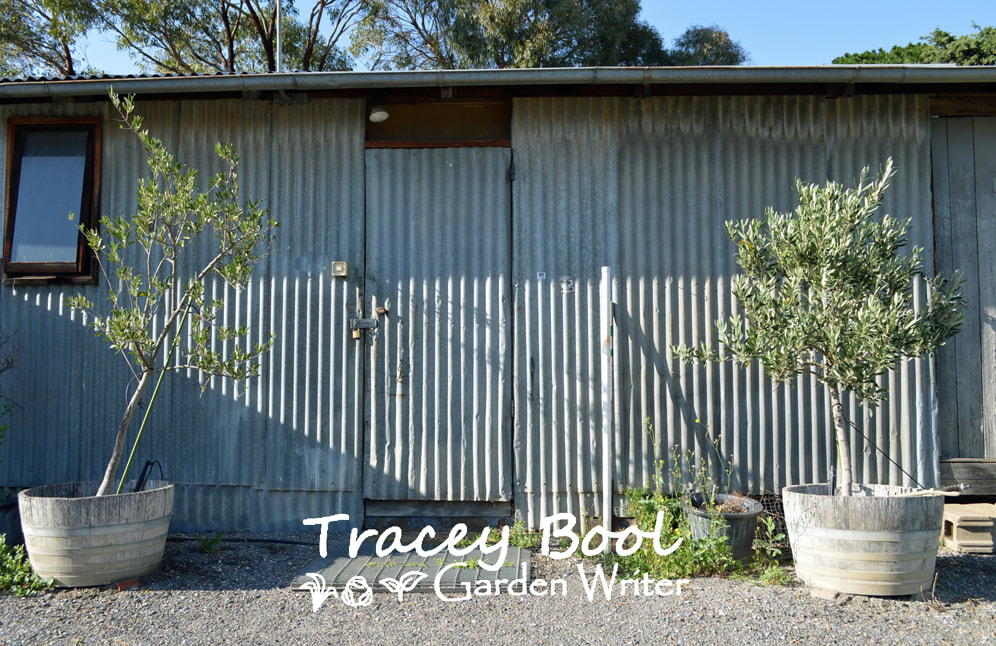|
World Class Homeleigh Grove Olives
(February 2019) Peter and Caroline O’Clery of boutique Homeleigh Grove Olives in Hall ACT have lived at their 41-acre farm since 1984. In 1999 after thorough research and farming backgrounds, the couple started out trialling 4 olive varieties and 10 trees. They soon realised that they would be waiting sometime to see any results however, so they took a chance and planted 125 trees. Currently, there are 2000 trees on the multi award winning farm, the maximum recommended number two (highly motivated!) people can manage effectively. Both table and oil varieties are grown. There are 8 metres between rows and 5 metres between trees, to ensure maximum sunlight is received. Peter said an 18-year-old tree produces around 60 to 80 kilos of olives. The trees are propagated via cuttings, to ensure likeness and vigorous root systems. The climate in the Canberra region is not dissimilar to Tuscany where olives thrive, with lower annual rainfall being the main difference. Favourable conditions for olive production include well drained soil, consistent irrigation, light winds (olives are wind pollinated) and lots of sunlight. Shortly before harvesting olives for oil production, any lower and crossing branches are removed from the trees to make access and harvesting more efficient. Caroline and Peter said the machine which clamps the base of the trees and shakes them vigorously doesn’t harm them, and in fact, is said to increase their robustness. The more mature trees are harvested by a contractor over several days. Peter harvests the smaller, less mature trees himself using a smaller machine which attaches to their tractor. The fruit is then loaded into large tubs which hold 500kg each, before being sent off to be processed. Once processed and returned the oil is stored in sizeable bladders or a holding tank. From there it is bottled as required, either as is or infused with any number of delectable flavours. Olives destined for the table are handpicked using ladders over a period of a month or more (usually during April), and with each tree being picked over five times during that period. Some of the varieties are picked green as the skin becomes leathery and the flesh too soft if left to darken. Some varieties can also be picked when they have begun to colour. Caroline picks one colour at a time for efficiency. Ideally, within a day of picking, the fruit is hand washed in large tubs before being cured in brine and aged for 12 months in plastic barrels. The barrels are stored in an insulated shipping container and maintained at 15 to 20 degrees C – any lower inhibits the process. The bulk of pruning is carried out after harvest during autumn and takes a couple of months. Electric secateurs are used for ergonomics, manoeuvrability and increased safety. Trees are pruned to maintain an open habit, ensuring maximum light and ventilation to all parts of the tree. Some trees are also pruned to be more open on the sunward side, which increases light and ventilation reaching the other side of the tree. Irrigation via bore and holding tanks is carried out year-round to supplement rainfall. It is critical to production that the trees receive reliable watering during flowering and fruiting times. Irrigation of trees grown for oil production is scaled back around six weeks before harvest to reduce moisture levels in the fruit. Applications of Seasol and other products are applied throughout the season. Foliar fertiliser sprays are also applied. Homeleigh Grove has its fair share of challenges, including roos using trees as sparring partners, and starlings decimating ripening fruit on years coinciding with their migratory movements. On the plus side however, birds will also go through eating any fallen fruit, which helps keep potential pest & disease problems at bay. When asked about using their products at home Peter said, ‘We use oil in absolutely all cooking, cakes, BBQs, and in large quantities in mashed (and un-mashed) potatoes…. Irish heritage comes out strongly in favour of spuds, and the oil makes them great! Basically, in most recipes we substitute butter with oil’. Peter and Caroline give the following tips for growing backyard olives:
Homeleigh Grove Olive’s multi award-winning products are supplied to local businesses, as well as being available at the Capital Region Farmers Market and online. For more: https://www.homeleigh.com.au/ |
|




